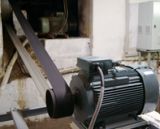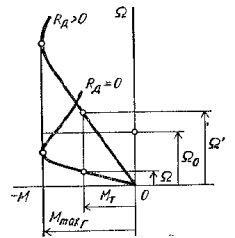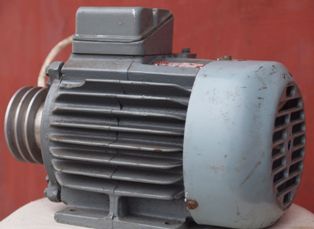Dynamic engine braking
 Dynamic braking is used to quickly and precisely stop the engine. There is the diagram of the dynamic braking of the engine with a description of the operation here… In the same article, we will consider the physical processes occurring during dynamic braking of squirrel-cage and phase-rotor induction motors.
Dynamic braking is used to quickly and precisely stop the engine. There is the diagram of the dynamic braking of the engine with a description of the operation here… In the same article, we will consider the physical processes occurring during dynamic braking of squirrel-cage and phase-rotor induction motors.
Dynamic braking of a squirrel-cage rotor occurs after disconnecting the stator winding from the mains. The motor stops after the coil is connected to the DC supply.
Direct currents in the phases of the stator winding cause a corresponding EMF, which excites a stationary magnetic field in the motor. It induces alternating emf and currents of decreasing frequency in the winding phases of a rotating rotor. Therefore, the induction motor goes into alternator mode with fixed magnetic poles. In this mode, the motor converts the kinetic energy of the links of the production mechanism moving and rotating by inertia into electrical energy, which is converted into thermal energy in the rotor winding circuit.
The interaction of the magnetic field excited by the magnetomotive force of the stator winding with the current in the phases of the rotor winding causes the appearance of a braking torque under the influence of which the motor rotor stops.

Rice. 1. Schemes for switching on the phases of the stator winding of a three-phase asynchronous motor for constant voltage during dynamic braking
The magnitude of the braking moment depends on the value of the magnetomotive force of the stator winding, the value of the active resistance of the adjustable resistors of the rotor winding circuit and its speed. To achieve satisfactory braking, the DC current must be 4-5 times the no-load current of the induction motor.
The mechanical characteristics of an induction machine during dynamic braking pass through the origin, since there is no braking torque at an early zero speed. The value of the maximum braking moment increases with an increase in direct current, but it does not depend on the value of the active resistances of the adjustable resistors introduced in the circuit of the rotor winding, which determine its speed, at which the torque reaches the value Mt = MlyulkaG... At a given braking moment Mt increasing the active resistance of the resistors Rd leads to an increase in the speed of the rotor.
Dynamic braking of asynchronous motors is quite economical and feasible both at speeds lower than synchronous speed and at speeds exceeding it (Fig. 2).

Rice. 2. Mechanical characteristics of a three-phase wound-rotor induction motor under dynamic braking
For three-phase asynchronous motors with a squirrel-cage rotor, capacitor braking is also often used, in which a symmetrical three-phase capacitor bank is connected to the terminals of the stator winding, which, after disconnecting the machine from the mains and the rotor rotating by inertia, excites a three-phase symmetrical voltage system in the stator winding. Due to the transition of the machine to the generator mode, a braking moment occurs, which reduces the speed of the motor rotor. Read more about it here: Capacitor braking of asynchronous motors

